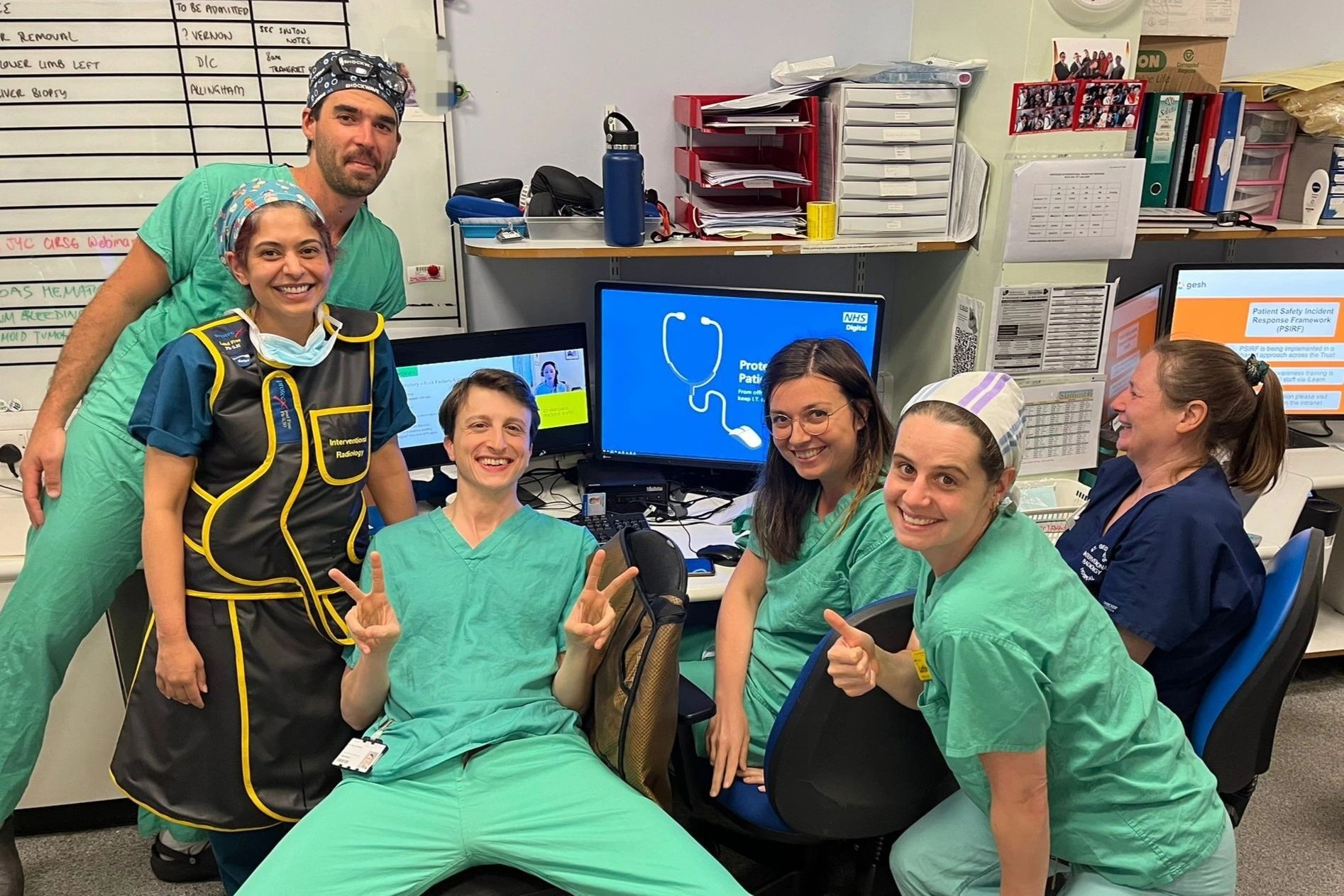Clinical practice insights
In addition to enhancing my procedural skills, I was able to gain some valuable insights into various aspects of clinical practice, which was one of my fellowship goals. This included patient assessment, pre-procedure planning, post-procedure care, and follow-up protocols. The holistic approach to patient care at St George’s emphasized the importance of patient communication, informed consent, and individualized care plans, all of which are crucial for successful outcomes, especially in a relatively young specialty such as interventional radiology. I could observe that at St George’s, patient communication was given high priority. Patients were thoroughly informed about their procedures, including potential risks and benefits, and were actively involved in the decision-making process. This approach not only improved patient satisfaction but also ensured that patients were well-prepared for their procedures and could provide informed consent.
Pre-procedure planning at St George’s was meticulous, with detailed discussions about each patient’s case starting during the routine multidisciplinary team meetings. This collaborative approach ensured that all aspects of the patient’s health were considered, leading to more comprehensive and effective treatment plans. In contrast, pre-procedure planning at my home institution is often less detailed, with fewer opportunities for multidisciplinary input which often lacks of support and involvement. Implementing a more thorough and collaborative planning process will certainly improve patient care and treatment outcomes.
Post-procedure care and follow-up at St George’s were also well-coordinated, with clear protocols in place to monitor patients and address any complications that may arise. This comprehensive approach ensured that patients received the necessary care and support throughout their treatment journey with follow-up appointments at the IR clinic already organized at patients’ discharge. In comparison, post-procedure care at my home institution is less structured, with inconsistencies in follow-up protocols and no direct involvement of IR as referring physicians for patients’ follow-ups. I believe that improving post-procedure care and follow-up processes will enhance patient outcomes and satisfaction as well as increase our visibility as a clinical specialty.
Meeting expectations
My expectations for my CIRSE fellowship were high, and I am delighted to say that they were not only met but exceeded. The combination of hands-on experience, expert mentorship, and exposure to cutting-edge technology created an unparalleled learning environment. The collaborative atmosphere throughout all the department and staff members, and the emphasis on continuous learning made this experience truly exceptional.
I had hoped to gain practical skills, especially in purely endovascular procedures such as BTK revascularizations, and get a deeper knowledge of how to run a proper IR clinical practice, and the fellowship provided ample opportunities for this. The mentorship from Dr. Joo-Young Chun was invaluable, offering guidance and support that enhanced my understanding of both the technical and clinical aspects of all interventions performed at St George’s. Additionally, the exposure to different clinical setups and workflows broadened my perspective and highlighted the importance of innovation and efficiency in delivering high-quality care.
Conclusion
My CIRSE fellowship at St. George’s Hospital was a transformative experience that enriched my professional development in countless ways. The exposure to advanced procedures, efficient workflows, and multidisciplinary collaboration has equipped me with the knowledge and skills that I’ll try to bring back and significantly enhance my practice. I am eager to implement the new techniques and strategies learned during my fellowship, and I am confident that these innovations will lead to better patient care and optimized operations at my home institution. I look forward to sharing the insights and knowledge gained during my fellowship with my colleagues and contributing to the advancement of interventional radiology at my hospital.
Finally, I am deeply grateful to Dr. Joo-Young Chun, my mentor, for her invaluable guidance and support throughout my fellowship. I also want to thank the entire team, including all IR consultants, the physician assistants, nurses, and staff, for their helpfulness and courtesy. A well-deserved thank you goes to the wonderful fellows and physician assistants including Matt, Arjan, Shy, Lola, Helen and Lottie who helped me feeling at home from the very beginning and who were always available for me when needed. Their goodwill and willingness to help out made my time at St George’s both educational and incredibly gratifying.
I was really lucky to spend such a fruitful month at St George’s Hospital and I thank the CIRSE Fellowship Programme for making this opportunity possible!







